Hey there, winter warriors! Are you ready to dive into the frosty depths of Montana’s most bone-chilling seasons?
As the temperature drops and the snow begins to fall, the state transforms into a frozen tundra that can test even the toughest of souls.
From its bitter-cold temperatures to its countless feet of snow, Montana’s bad winters are on a different level.
- Related article: Montana’s Statehood Year
Today, we journey across time through the state’s worst winters in an effort to find the beauty hidden beneath treacherous storms.
Ready to embark on this epic winter quest? Let’s dive in!
Montana Winters: What Are They Normally Like?
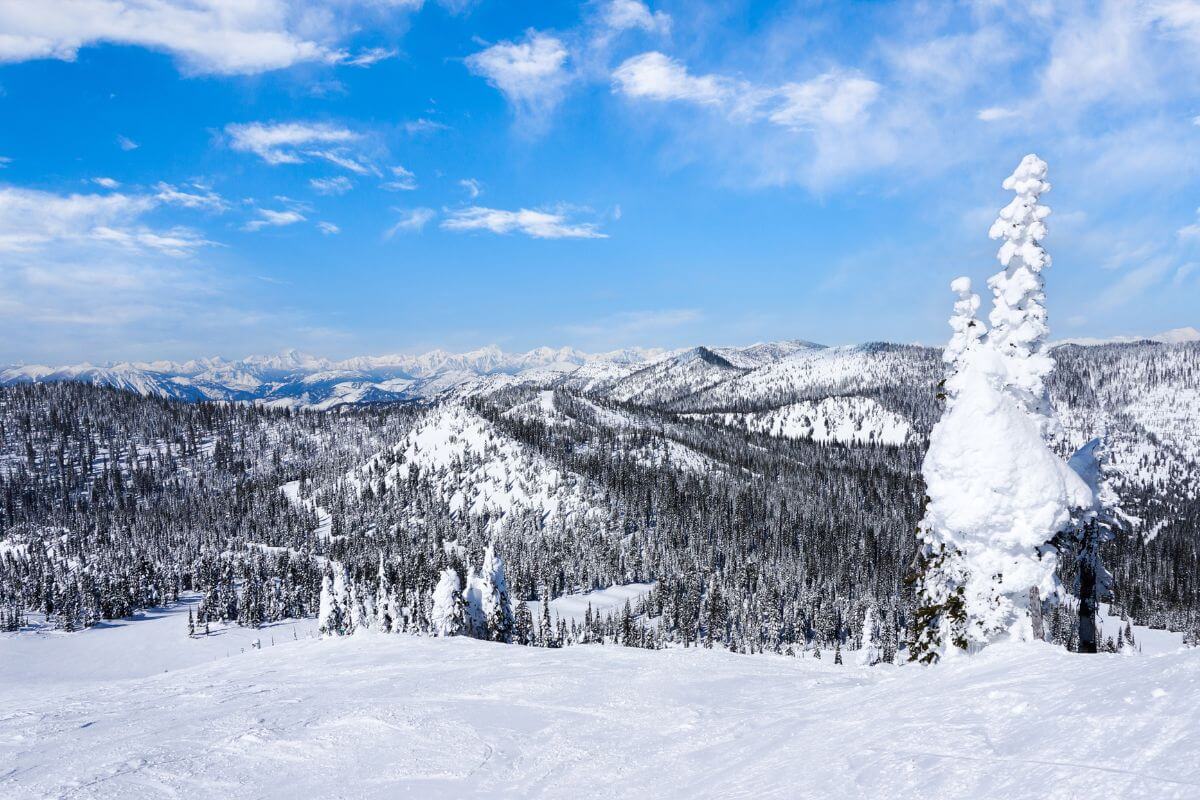
We know mild winters are rarely a thing in Montana, so what exactly are its winters really like?
Here’s the lowdown:
- Varied Intensity – Montana experiences varying levels of winter severity from year to year. Despite perceptions of a tough winter, some years are even more extreme.
- Temperature Extremes – While not every winter witnesses record-breaking lows, Montana holds a reputation for frigid temperatures. The coldest known low during January’s first week was a bone-chilling -46°F.
- Quick Changes – Conditions can change rapidly and drastically during Montana winters. Abrupt temperature transitions are common, catching both nature and residents off guard, such as what happened during the winter of 1989.
- Record-Breaking Cold – Montana holds the national record for cold with a staggering -70°F reading near Helena, underscoring its reputation for extreme winter conditions.
- Wide Temperature Range – From early November through March, Montana towns experience a wide range of recorded lows, spanning from -10°F to -50°F or even colder.
- Widespread Impact – Montana’s winters aren’t just about low temperatures. The combination of extreme cold and powerful winds can lead to a wide range of consequences, from overturned railroad cars to damaged roofs and power lines.
- Drastic Temperature Drops – Montana can experience rapid temperature drops over short periods. For instance, the temperature at Fairfield near Great Falls dropped by an astonishing 84°F in just 12 hours.
- Long-lasting Cold – Winters, like the one in 1936, see prolonged periods of frigid temperatures. Many areas of Montana east of the mountains recorded below-zero readings for 57 consecutive days.
- Impact on Livestock – Severe winters can have a significant impact on the cattle industry, as seen in the infamous winter of 1886-87. Harsh conditions resulted in substantial losses to cattle herds and marked the end of unmanaged grazing practices.
- Challenging Travel – Winters in Montana can lead to challenging travel conditions, with heavy snow and drifts blocking roads. This is illustrated by instances where snowplow crews struggled to keep roads open due to relentless snowfall.
Overall, Montana winters are characterized by their harshness, rapid changes, and a range of challenges that impact both the environment and the people who call this state home.
Montana’s Worst Winters
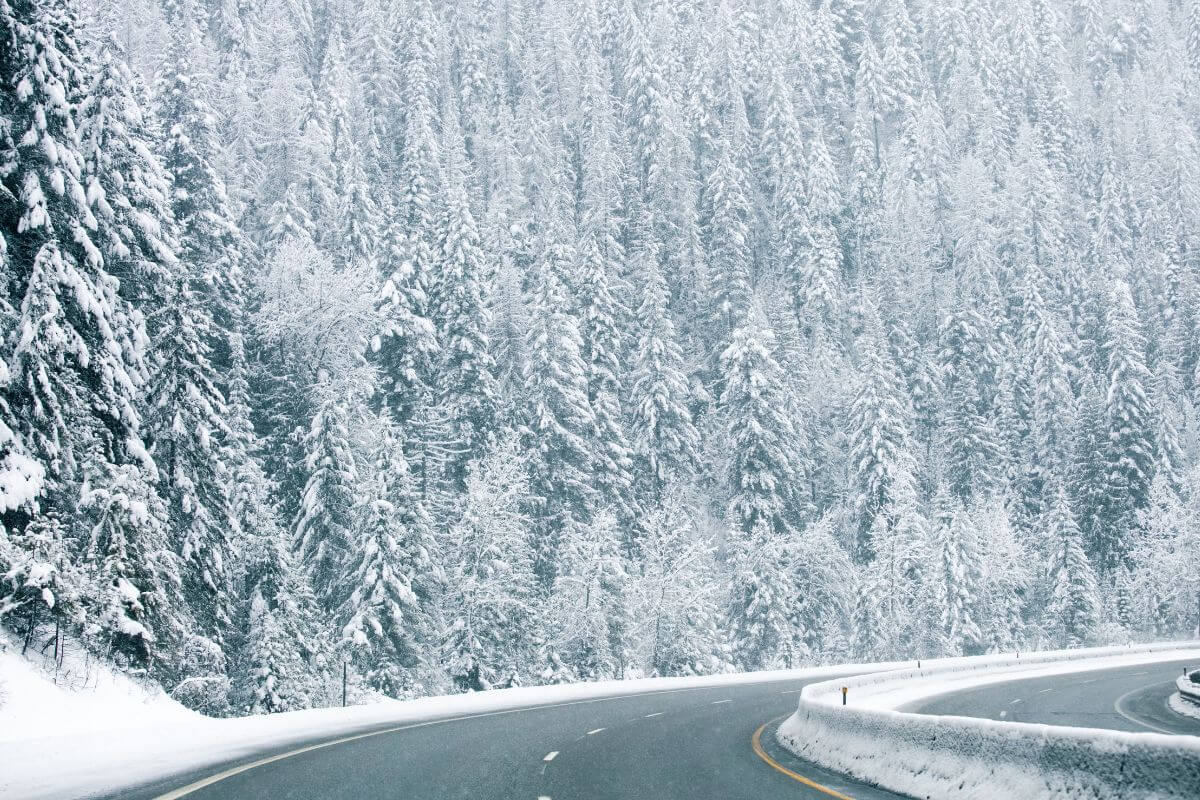
Montana has seen its share of legendary harsh winters.
These intense seasons bring the strongest storms, covering the land with layers of snow. Here are past winters that had the toughest impact on Montana.
1. Montana Winter of 1886-1887
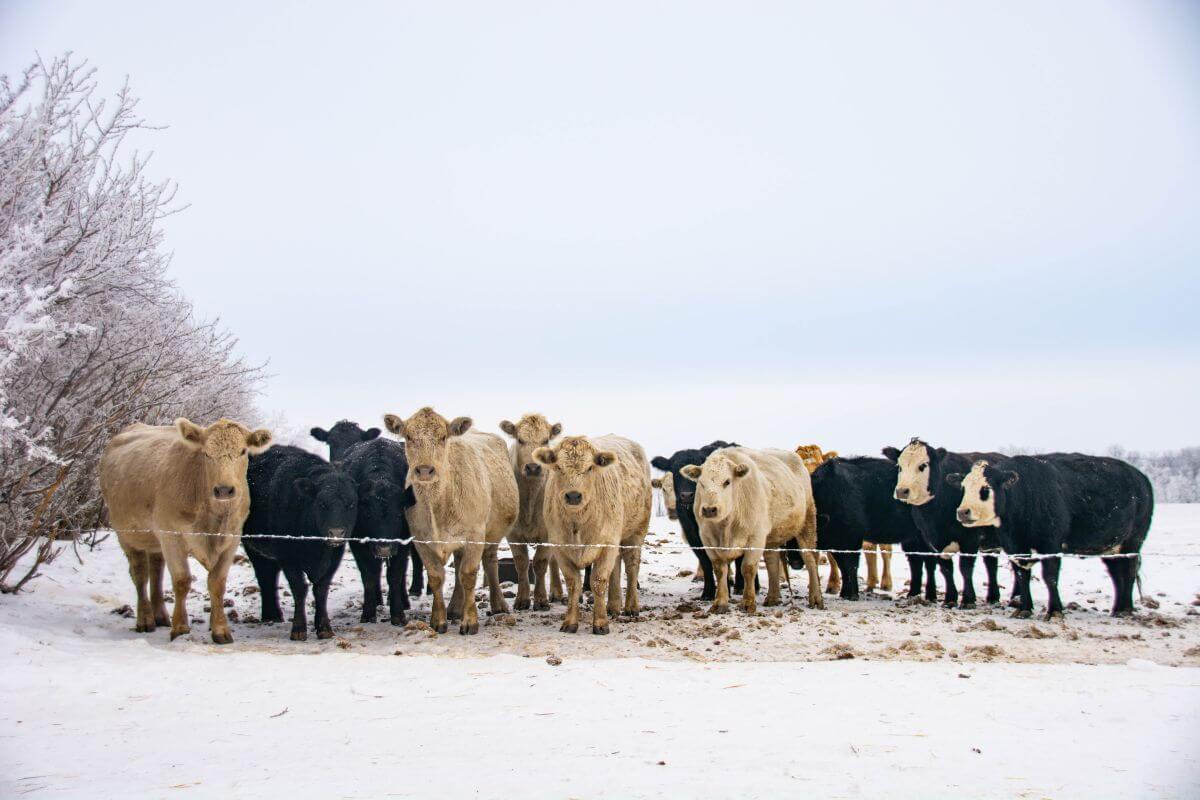
Montana Winter of 1886-1887, often referred to as “The Big Die-Up,” “Death’s Cattle Round-Up,” or “The Great Die Up”, was undeniably one of the worst winters in Montana’s history.
The extreme weather conditions and record-breaking cold temperatures left a lasting impact on the livestock industry and the way people lived on the state’s western plains.
Across states like Montana, North Dakota, and Wyoming, cattle herds were stocked up in anticipation of the winter months.
However, the winter of 1886-1887 proved to be merciless.
Montana alone lost an estimated 362,000 head of cattle, along with countless horses and sheep, which accounted for a staggering 60% of the state’s herds.
The land was covered with carcasses, and the contaminated waterways became a haunting attraction for scavengers like wolves and bears.
This devastating winter led to widespread bankruptcy among ranchers, forcing survivors to adopt new practices for the future.
Fencing pastures and growing crops for winter feed became crucial as the shift from open-range grazing to more controlled practices took place.
The impact of the Montana Winter of 1886-1887 reshaped the mindset and practices of the entire region.
It served as a stark reminder of the forces of nature and the precariousness of relying solely on the land for survival.
- Learn more about the Harsh 1886 Montana Winter
2. Montana’s Arctic-Like Winter in 1889
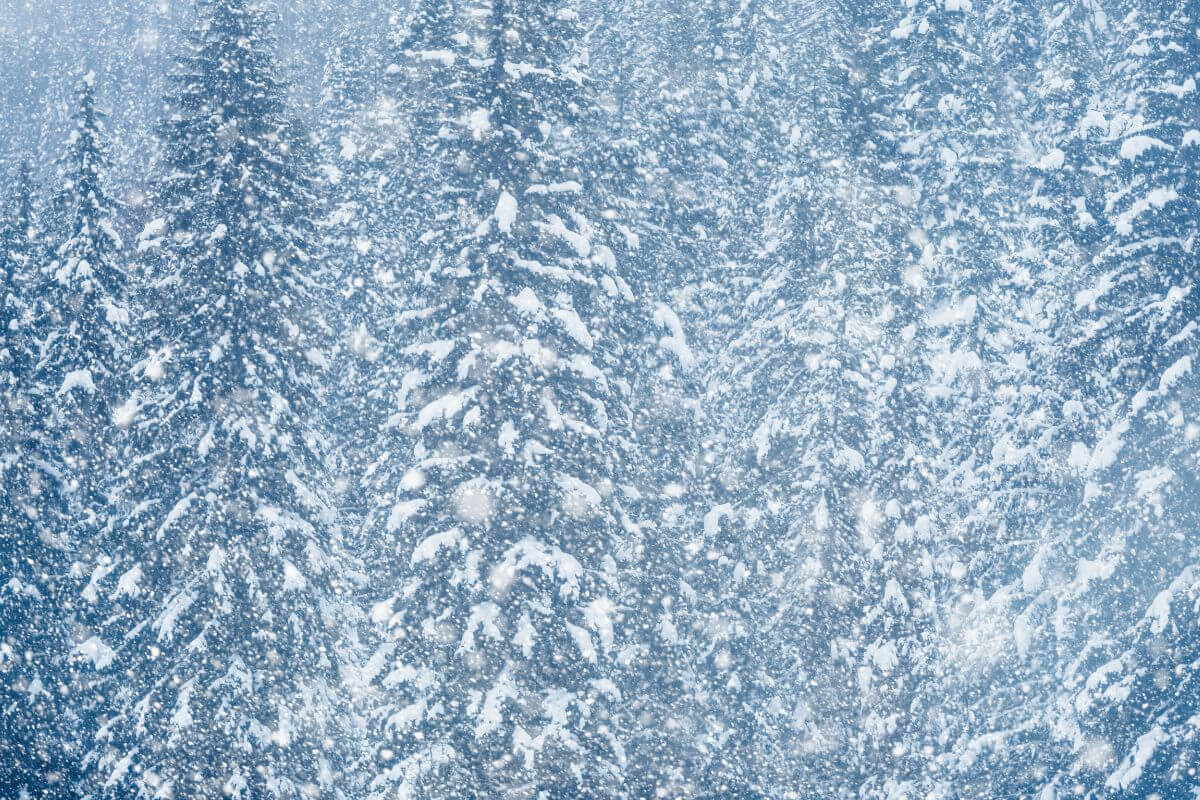
In 1889, Montana experienced an Arctic-like winter that left the state reeling from its extreme weather conditions.
From January 30 to February 4, an intense and frigid air mass from the Arctic swept into the northern Rockies, resulting in record-breaking low temperatures and a significant impact on the state.
Cities like Billings and Bozeman bore the brunt of this merciless cold spell, as they experienced consecutive record lows for several days.
Billings endured 5 days of consecutive record lows, showcasing the persistence of this bitter cold.
Similarly, Bozeman set record lows for 4 consecutive days, highlighting the prolonged duration of the extreme conditions.
Missoula, Montana suffered the severity of this Arctic blast as it established record low temperatures of -22°F and -23°F on February 3 and 4 respectively.
These bone-chilling readings underscored the intensity of the cold wave that engulfed the area.
Perhaps the most staggering temperature recorded during this arctic-like winter was in Wisdom.
On February 3, the thermometer plummeted to an unheard-of -52°F, illustrating the truly extreme and unforgiving nature of the conditions experienced during this period.
Montana’s Arctic-like winter of 1889 stands as a testament to the unpredictability of nature and the resilience of its inhabitants in the face of such harsh challenges.
3. Browning, Montana Winter of 1916
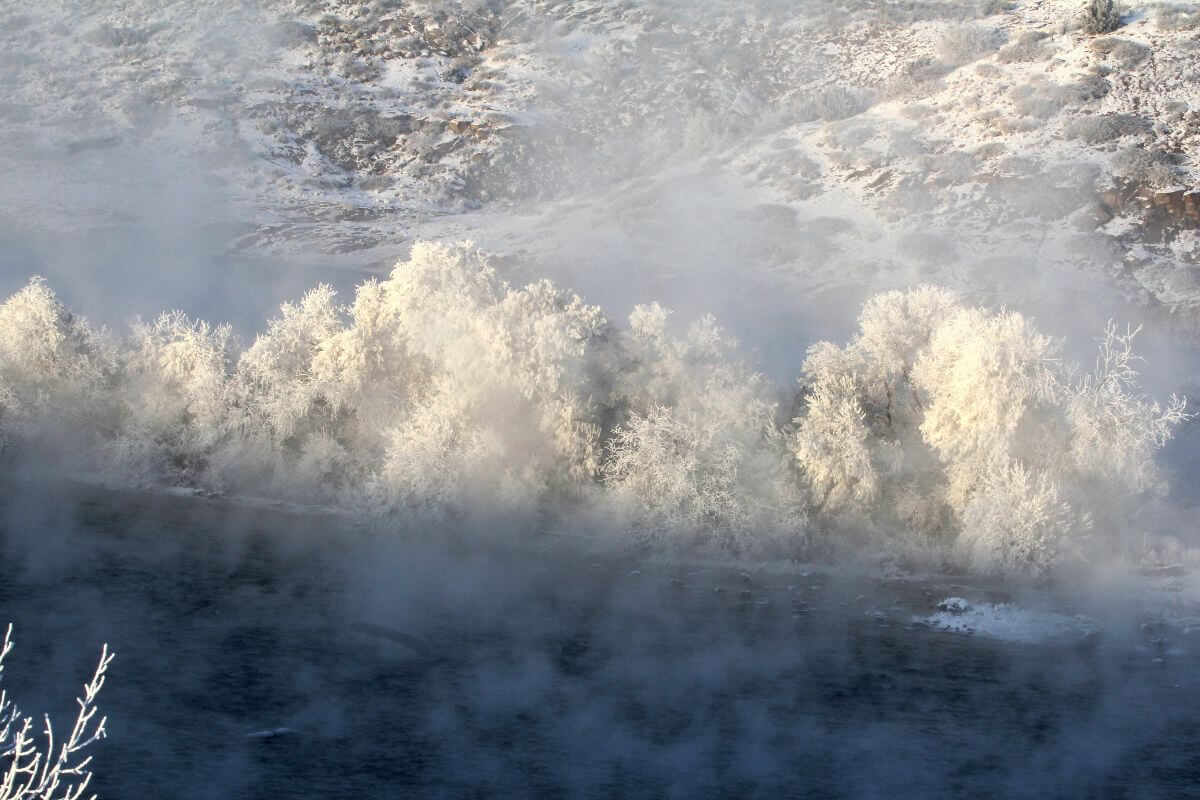
The Winter of 1916 in Browning, Montana was a time when Mother Nature unleashed her chilling wrath upon the state.
The temperatures plummeted to seemingly unreal levels.
In Browning, Montana, the temperature plunged an astonishing 100°F, dropping from 44°F to a bone-chilling -56°F within 24 hours. This stands as the most extreme temperature drop in U.S. history.
But Browning wasn’t the only place that felt the icy grip of this merciless winter.
Fairfield, near the icy expanse of Freezeout Lake, witnessed an 84°F plunge on that fateful Christmas Eve of 1924.
As the residents prepared for their festive celebrations, the thermometer mercilessly fell from 63°F to a brutal -21°F, creating a Christmas that was more frozen than merry.
The Winter of 1916 in Browning was definitely one for the history books.
4. Montana’s Most Brutal Winter of the 20th Century in 1935-1936
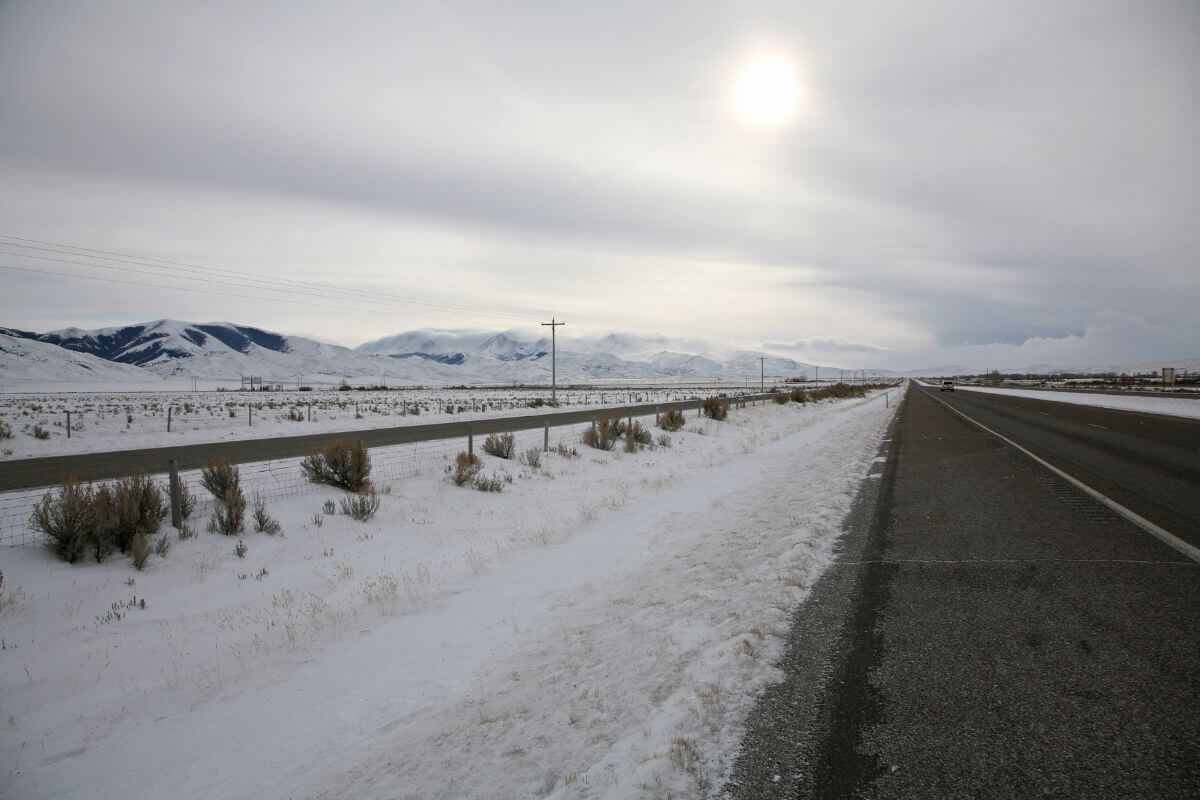
Winters in Big Country Sky have a reputation for their severity, but none perhaps more brutal than this 20th-century winter.
The Winter of 1935-1936 was not only marked by bone-chilling temperatures and deep snow, but it also coincided with the Great Depression, making it one of Montana’s most severe winters since 1887.
The average temperature for February in 1936 was a staggering 22.4°F below the normal range, a clear indication of the intensity of the cold spell.
On February 15th, temperatures plummeted to unprecedented lows, reaching -53°F at Summit, -57°F at Cascade, and a mind-numbing -59°F at Glasgow.
These numbers underscore the brutal nature of the winter and the resilience required to endure such extreme conditions.
Scarce resources compounded the challenges faced by Montanans during this winter.
School closures were necessary, frozen water pipes became a daily struggle, and obtaining feed and fuel became an arduous task. The hardships were not just inconveniences; they were matters of survival.
Tragically, the harsh conditions of Montana Winter 1935-1936 claimed the lives of 15 individuals.
The bitter cold became a merciless foe, with fatalities serving as a reminder of the relentless power of nature in the face of human vulnerability.
While some relief came in March, bringing a glimmer of hope, the icy grip of winter refused to let go.
Cold weather returned in April, with Chessman Reservoir recording a bone-chilling -28°F on April Fool’s Day. This
The winter of 1935-1936 remains etched in Montana’s history as one of the most brutal seasons.
5. Montana’s Worst Winter Storm in Spring 1969
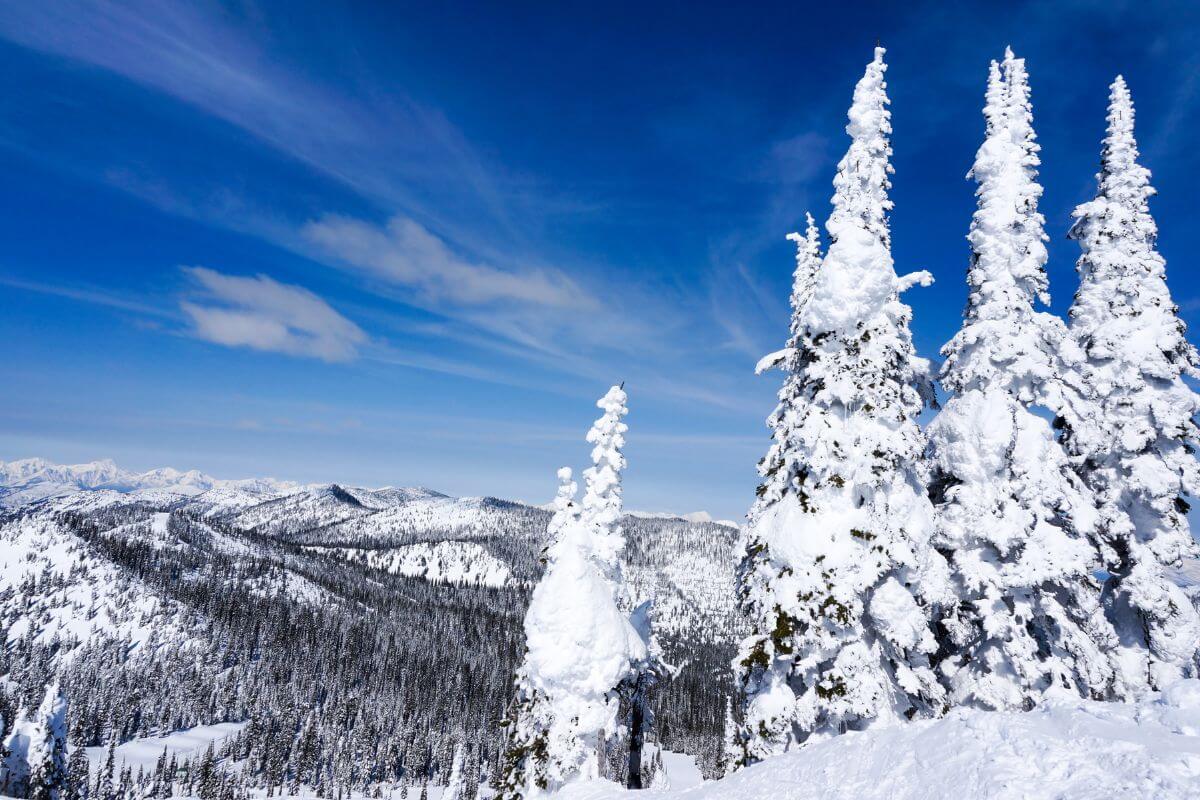
Montana’s worst winter storm in the spring of 1969 was a perplexing and devastating event that caught many residents off guard.
Despite occurring in the season of renewal and growth, this late-season snowstorm unleashed its wrath upon southeastern Montana with an unparalleled intensity.
Record-breaking snowfall blanketed the region, accumulating up to a staggering 32 inches of snow.
The snowdrifts, reaching heights of 20 feet, created an otherworldly landscape that seemed straight out of a winter nightmare.
Such extreme conditions are unexpected during late April, adding to the burst of perplexity and disbelief.
The blizzard conditions and bone-chilling below-zero wind chills brought immense losses to the area.
Adding to the chaos, powerlines fell victim to the storm’s fury. Prolonged power outages, lasting for weeks, plunged communities into darkness and isolation.
The absence of electricity brought further challenges to an already dire situation, compounding the struggle to survive.
The devastating impact of Montana’s worst winter storm in the spring of 1969 showed nature’s unpredictability and the resilience required to withstand its might.
6. Montana Winter of 1988-1989
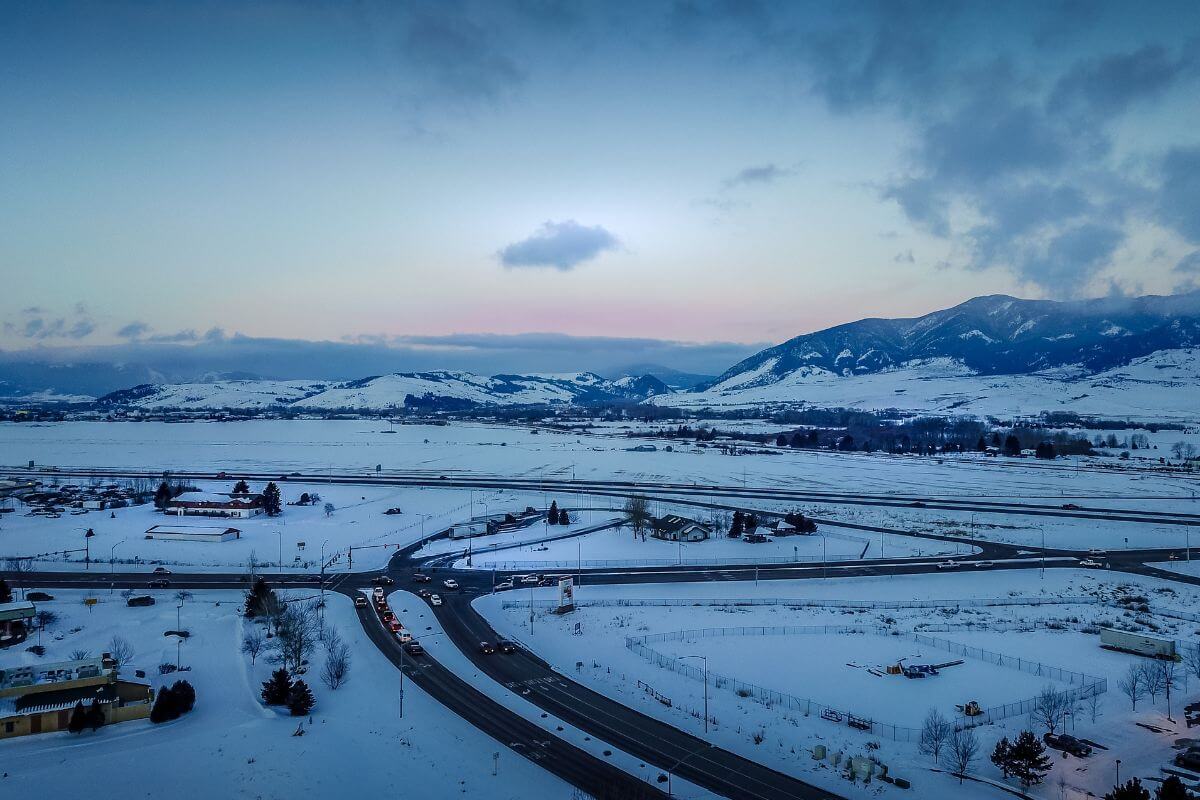
One day in February during the Montana Winter of 1988-1989, Bozeman experienced a record low of temperature -27°F.
And if that wasn’t bone-chilling enough, the temperature dropped even further during a deep freeze, plummeting to a shocking -44°F.
But it wasn’t just the freezing temperatures that wreaked havoc.
At Boulder Hot Springs, the frigid air caused significant damage to the hotel’s pipes, which were carrying hot springs water.
It was a cruel irony that right before the city began to freeze over, residents were enjoying a warm spell.
Travel during this cold snap was no easy feat. The temperatures plummeted, the winds gusted, and severe wind chills made it feel like we were in the great depths of the Arctic.
The Montana Winter of 1988-1989’s cold snap was felt far and wide across the state.
Great Falls saw a dramatic drop in temperature and the Rocky Mountain Front experienced wind gusts that exceeded 100 miles per hour.
It was a season of extremes, a winter that showed no mercy, and a stark reminder of the power of Mother Nature.
7. Billings, Montana Winter of 1954-1955
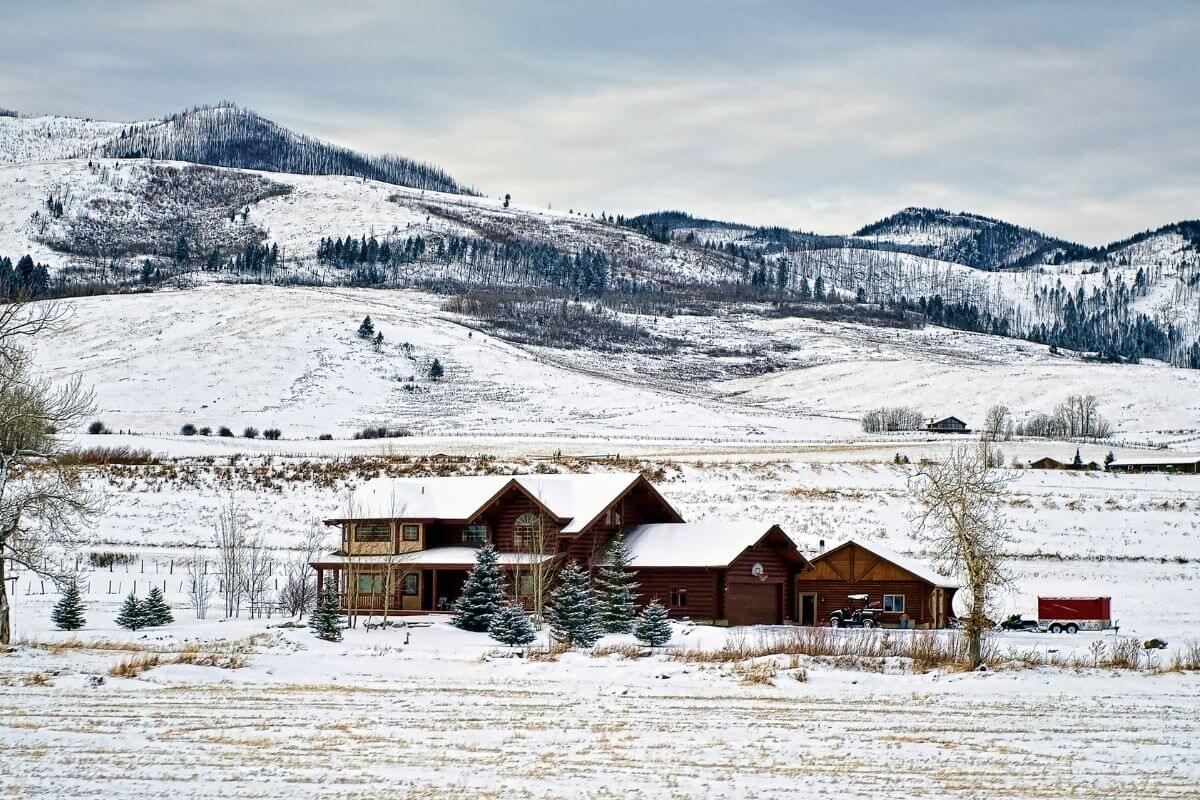
The Winter of 1954-1955 in Billings, Montana was a particularly harsh one that brought a record-breaking snowstorm in early April.
The state’s weather has always had a reputation for defying conventional expectations, and this snowstorm was the perfect example.
From April 2 to April 5, the storm unleashed its fury, covering the city in a thick blanket of snow.
An estimated 42.3 inches of snow accumulated during this short period, leaving residents in disbelief.
The fact that such a massive snowstorm could happen in early April is a testament to the distinct and unpredictable nature of Montana’s weather.
In a state where winters are known for their brutal cold and heavy snowfall, this snowstorm proved that Montana’s weather has a mind of its own.
8. Butte, Montana Winter of 2012
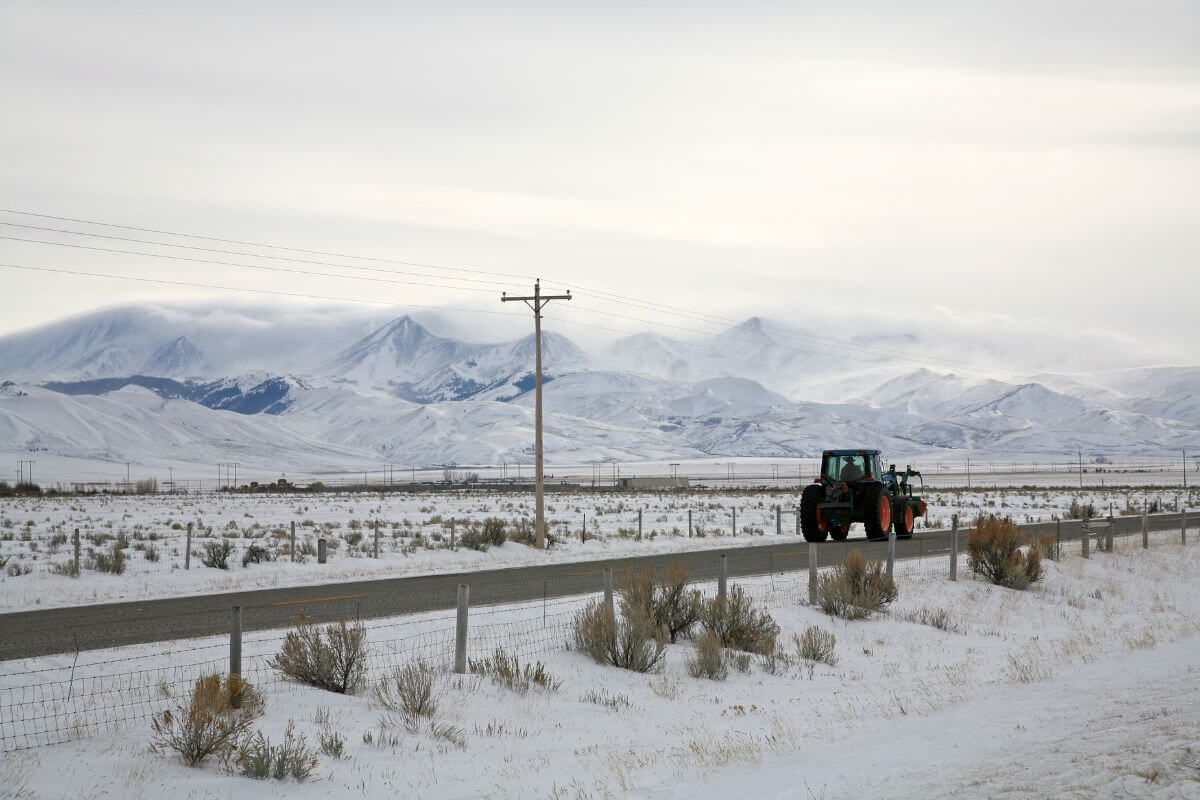
On a fateful November 9th day, the Montana Winter of 2012 unleashed a powerful snowstorm on Butte, leading to hazardous road conditions that caused a total of 30 crashes.
With slick roads and limited visibility, it was no wonder drivers found themselves in such dire circumstances that day.
What made this winter so striking was just how sudden it all happened.
Many unsuspecting individuals were caught off guard by the swift and relentless snowfall.
It showed residents how crucial it was to be ready for significant weather events like this.
Have emergency kits, and warm clothes, and be prepared for the changing conditions.
9. Havre, Montana Winter of 2017
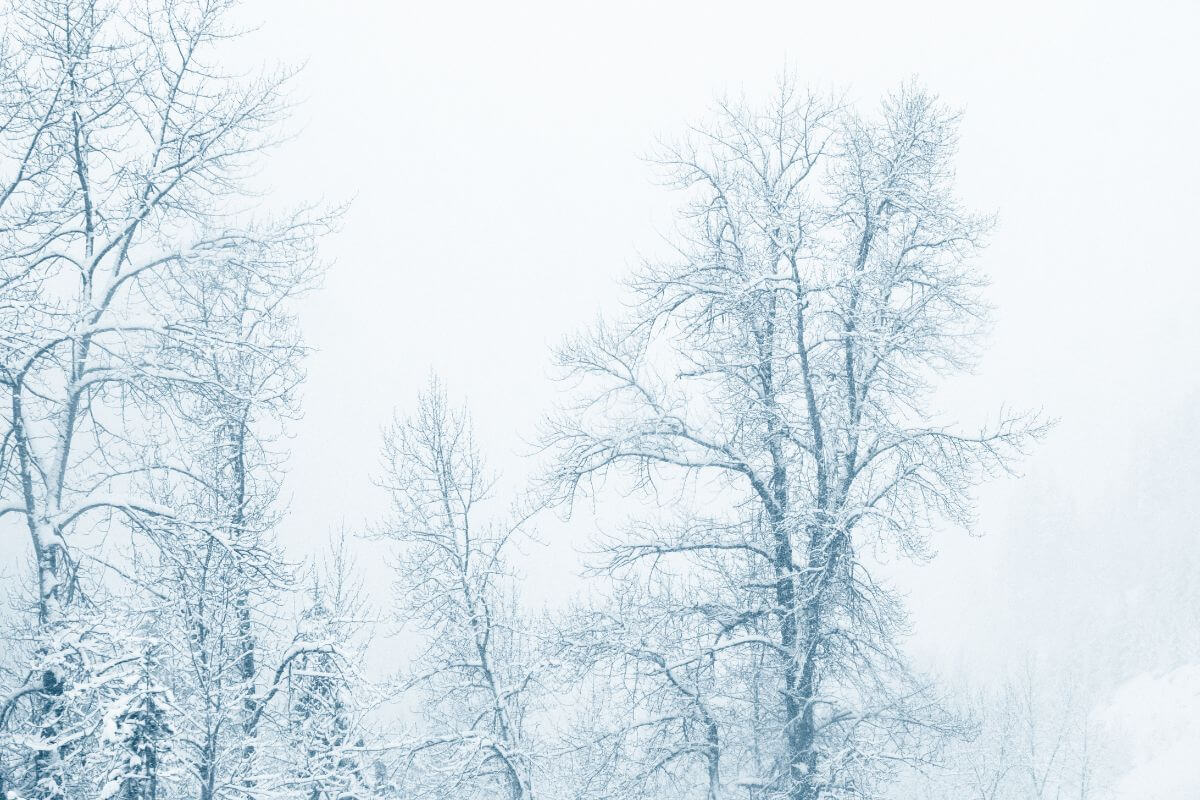
In Havre, Montana, the winter of 2017 was nothing short of destructive. It began in October with a blizzard that set a new record for snowfall in the month.
Picture this: over 30 inches of snow, burying the city and leaving its residents helpless.
It was a clear sign that this winter was going to be one for the books.
Another highlight of the event was its heavy snowfall.
Streets disappeared under the drifts, and it became a daily struggle for residents to dig themselves out.
The snowplows worked tirelessly, but it felt like a losing battle against Mother Nature’s icy grip.
This intense winter in Havre, Montana in 2017 served as a reminder that Montana’s winter seasons can sometimes occur earlier than expected.
Montana’s Worst Winters Final Thoughts
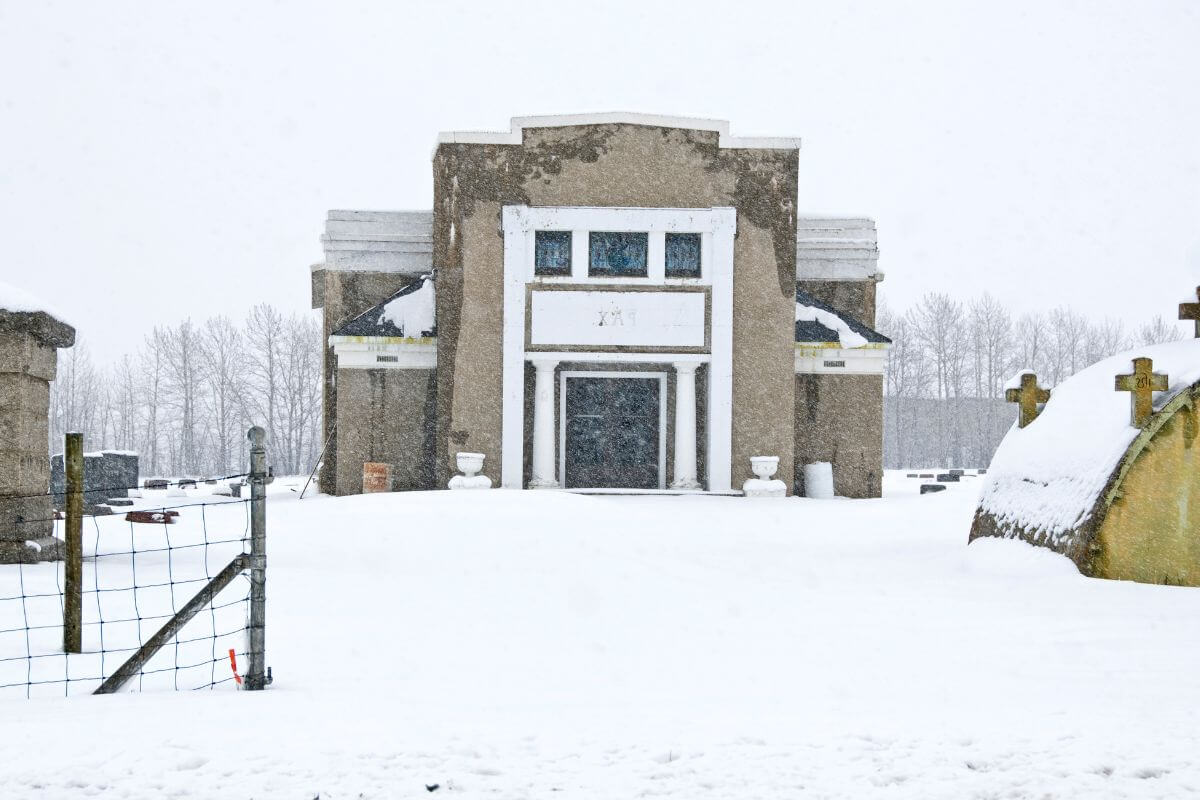
Historically, Montana has seen its fair share of brutal winters.
The Winter of 1886-1887 left its mark on the state, decimating cattle herds with its relentless cold.
The Winter of 1935-1936 claimed 15 souls as record-breaking temperature changes swept through the land.
But amid the challenges and chaos, there is a spirit of resilience and adaptability that shines through.
Montana’s worst winters not only test the limits of endurance but also showcase the strength and determination of its people.
From snow tires to warm clothing, Montanans know how to navigate unforgiving winters with grace.
Montana’s Worst Winters FAQs
1. What Was the Worst Winter in Montana?
The Winter of 1886-1887 was arguably the worst winter in Montana’s history, with bone-chilling temperatures and a scarcity of resources that left the state in dire straits.
The brutal cold claimed an estimated 60% of Montana’s herds or around 362,000 head of cattle, along with horses and sheep, forcing a shift from open-range grazing to more controlled practices.
2. What Is the Coldest It Can Get in Montana?
Montana’s coldest winter in history saw the temperature plummet to a bone-chilling -70°F at Rogers Pass in 1954.
A record-low event took place before this at West Yellowstone on February 9, 1933, when the temperature dropped to a mind-numbing -66°F.
3. What State Has the Roughest Winters?
With its extreme weather conditions, bone-chilling temperatures as low as -60°F, and heavy snowfall, Minnesota has gained a reputation for having some of the harshest winters in the U.S.
The state can experience rapid snow accumulation, with up to 3 feet of snowfall in just 24 hours.
4. Is Montana the Coldest State?
No, Montana is not the coldest state in the United States. While it is known for its harsh winters and extreme weather events, it does not hold the title of the coldest state.
That honor belongs to Alaska, with its average annual temperature of 30.7°F, record-low temperatures, and frigid winter conditions.
5. Are Winters Bad in Montana?
With extreme temperature drops and deep snow, Montana winters can be unpredictable and challenging. However, it is important to note that these are not the only things that characterize the state’s winter season.
In fact, for many residents and tourists, the winter months are a source of fun and amusement.
Discover more about Montana by checking out these great reads about The Treasure State:
- Montana’s Name Explained
- Deciphering Montana 406
- The Underwater History of Montana
- Fires in Montana Over Time
- https://www.umt.edu/this-is-montana/columns/stories/montana-winters.php
- https://www.umt.edu/this-is-montana/columns/stories/montana-70below.php
- https://www.nps.gov/yell/learn/nature/winter-ecology.htm
- https://www.nps.gov/grko/learn/historyculture/winter.htm
- https://csit.udc.edu/~rpalomino/courses/spring13/wd/sites/rachana/proj1.html

